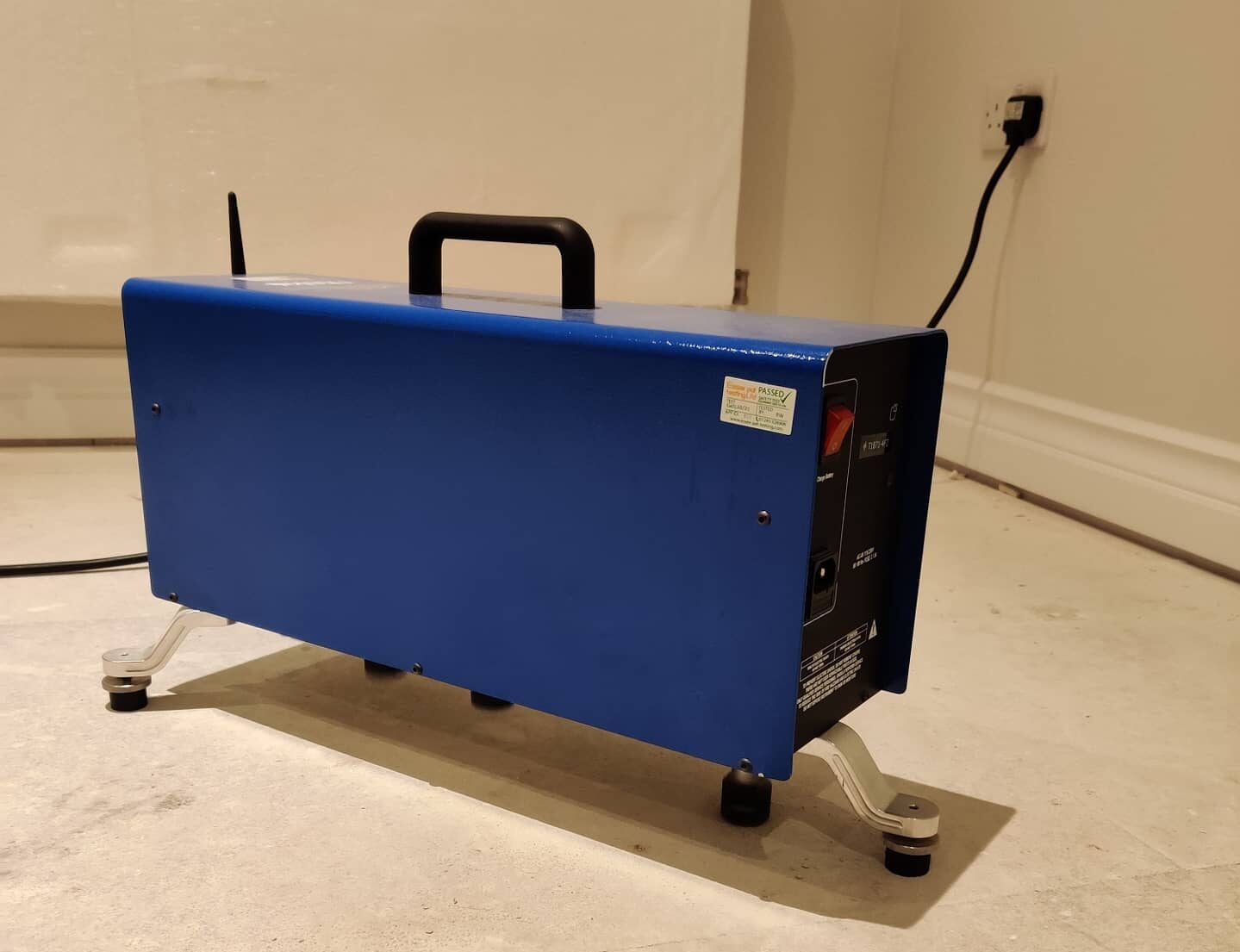
Sound Test
Impact Floor
Building Compliance Testing Limited can provide you with a fast and cost effective SITMA Accredited Pre-Completion Sound Insulation Testing across Mainland UK, in accordance with BS EN ISO140 and BS EN ISO16283.
 Sound Insulation Testing – Impact Floor
Sound Insulation Testing – Impact Floor
also known as acoustic testing, or pre-completion testing, testing must be carried out on new build properties as well as converted properties to demonstrate compliance with Approved Document E. A property will either require an Airborne test or an Airborne and Impact test. Airborne tests are carried out on separating walls and floors between habitable rooms of flats and houses which consists of placing a loudspeaker in one room for a steady source of noise. Several measurements are taken around the speaker. Measurements are then taken on the other side of the wall or floor. Impact tests are carried out on the separating floors between habitable rooms of flats and consist of a tapping machine is placed on the floor and measurements are taken in the room beneath. The tapping machine is placed on in 4 random location within the source room. Please ensure carpet is removed for this part of the test and access available to both sides of the floor.
Typically each test takes between ten to twenty minutes to complete. This all depends of the size of the building, the test locations, the ability to create stable sound field and unfortunately the uncontrollable influence of environmental noise.
Types of Tests
– Impact Floor:
When assessing separating floors, a combination of an Impact Test and an Airborne Sound Insulation Test is conducted. The Impact Sound Insulation Test specifically evaluates the impact-related sound effects on a floor structure, such as footsteps.
In this test, a UKAS Calibrated Tapping Machine is placed on the floor of an upper room. The resulting sound pressure level is recorded in the room directly below (the receiver room). The impact pressure level is then standardized to a reference value, yielding a single numerical result that can be compared to established performance standards for impact sound insulation.
A sound test for impact noise on a floor is an acoustic evaluation that assesses the ability of a floor structure to reduce or dampen the transmission of impact-related noise, such as footsteps, moving furniture, or other physical impacts. The test is essential for understanding how effectively a floor system can prevent sounds generated in one room or living space from traveling through the floor and disturbing occupants in the room below.
The process typically involves the following steps:
Test Setup: The test is conducted in a controlled environment, typically in a building or room with different floor surfaces. A sound source is placed on the floor of the source room, and sound measurement equipment is set up in the room or space below.
Sound Generation: In the source room, the test involves creating impact noise, which can be achieved by activities such as dropping weights, walking, or using specialized impact machines designed to simulate real-life impacts.
Data Collection: Sensitive microphones and measuring equipment are positioned in the room below to record the impact sounds transmitted through the floor. The sound levels and frequencies of the transmitted impact noise are measured and analyzed.
Analysis: The collected data is then analyzed to determine the effectiveness of the floor in reducing impact noise transmission. This analysis helps in quantifying how much impact sound is being transmitted through the floor at various frequencies.
Results and Recommendations: Based on the test results, recommendations may be made to improve the floor’s acoustic performance. This might include using acoustic underlays, adding floor coverings with better sound-damping properties, or making structural modifications to reduce impact noise transmission.
Impact noise testing for floors is especially important in multi-story buildings, apartments, hotels, and other structures where occupants want to minimize disturbances from activities in adjacent or upper-level rooms. Compliance with building codes and standards related to sound insulation and noise control often requires such testing to ensure that floors meet specific performance criteria and provide a comfortable and quiet living or working environment.
The Standards
During Sound Insulation Testing, we adhere to British Standards that define the testing and rating of sound insulation for both Airborne and Impact Sound Insulation. These standards include:
BS EN ISO 140-7 – It addresses the field measurements of impact sound insulation of floors, ensuring comprehensive testing.
BS EN ISO 717-2 – Similarly, it focuses on rating sound insulation, but for impact sound, enabling a thorough evaluation.
Building Regulations Approved Document E encompasses four key areas:
- E1 – Protection against sound transmission from other parts of the building and adjoining structures.
- E2 – Protection against sound transmission within a dwelling-house and similar areas.
- E3 – Addressing reverberation in common internal parts of residential buildings, such as flats.
- E4 – Ensuring appropriate acoustic conditions in educational facilities.
Part E of the Building Regulations sets forth guidelines for achieving reasonable standards of sound insulation in residential buildings across England and Wales. It applies to a wide range of spaces, from homes to hotels, and covers new constructions as well as those undergoing refurbishment or conversion from a different use.
The objective of Approved Document Part E is to enhance occupant comfort and well-being by minimizing noise transmission, both airborne and impact, between neighbouring homes and within internal spaces. Compliance with Part E necessitates the use of sound insulation systems that meet the required airborne and impact noise insulation levels, often accomplished using Robust Details.
For internal walls, a minimum airborne sound insulation level of Rw 40 dB (laboratory test results) is required. This applies to internal walls between bedrooms and other rooms, as well as between bathrooms and other rooms, excluding internal walls with doors. Internal floors must also meet a minimum airborne sound insulation level of Rw 40 dB.
Separating floors between new homes and purpose-built residential spaces must achieve a minimum airborne sound insulation level of 45 dB DnT,w + Ctr (or 56 dB DnT,w in Scotland), which is determined through on-site testing and differs from internal walls. For rooms resulting from a change of use or conversion, the minimum requirement is 43 dB DnT,w + Ctr (or 53 dB DnT,w in Scotland).
In terms of impact sound transmission, the maximum allowable level is LnTw 62 dB (or LnTw 56 dB in Scotland) for separating floors between new homes and purpose-built residential spaces. For rooms converted from a change of use, the maximum limit is LnTw 64 dB (or LnTw 58 dB in Scotland).
These standards and regulations ensure that sound insulation in residential buildings meets specified performance criteria, contributing to a more peaceful and comfortable living environment.
The Equipment
It’s no surprise that the equipment used for Sound Insulation Testing is exceptionally specialized and necessitates frequent, precise calibration for consistent accuracy. All of our measurement equipment adheres to the strict requirements of accuracy class 0 or 1 as outlined in IEC 60651 and IEC 60804. Before each measurement, the entire measurement system, including the microphone, undergoes adjustment using a sound calibrator. To uphold accuracy during field tests, all equipment employed by Building Compliance Testing is meticulously calibrated by a UKAS-approved laboratory. It’s important to note that Building Compliance Testing is a registered member of SITMA, ensuring our commitment to upholding industry standards and accuracy in sound insulation testing.
Whether your requirements is for a domestic retrofit, residential or commercial development, Building Compliance Testing can support you from concept to completion by offering a one-stop-service service:
design reviews – site inspections – pretesting – intensity testing – site management training and education
Other Services
We can also offer a variety of other specialist services through our Partners, including:
– Full Design Reviews and Specifications
– BB93 Acoustic Design of Schools
– BREEAM Internal Ambient Noise Limit (IANL) Measurements
-Reverberation Time (RT60) Measurements
Summary
Sound Insulation Testing, also known as acoustic or pre-completion testing, is a crucial requirement for both new build and converted properties to demonstrate compliance with Approved Document E. These tests, either Airborne or a combination of Airborne and Impact, assess the sound insulation between habitable rooms. Airborne tests evaluate sound transmission through separating walls, while Impact tests focus on separating floors. Reverberation time (RT60) and background noise measurements, although essential in other contexts, are not factors affecting sound insulation test results. British Standards, such as BS EN ISO 140-4, BS EN ISO 140-7, BS EN ISO 717-1, and BS EN ISO 717-2, guide these tests, ensuring a controlled and standardized process to meet Building Regulations requirements. Building Compliance Testing employs specialized and precisely calibrated equipment to guarantee accuracy and compliance with industry standards throughout the testing process. Whether for domestic retrofit, residential, or commercial development, Building Compliance Testing provides comprehensive support from design reviews to site management, ensuring sound insulation standards are met from concept to completion.
Frequently Asked Questions
How do I prepare for a Sound Insulation Test?
- Ensure 240v mains electrical outlet is available in all rooms to be tested.
- Access to site is safe and to all the rooms throughout the building. If the adjacent dwelling is under
different ownership it is your responsibility to ensure access is available for the testing. - All rooms where testing is to occur is vacated of all trades during the sound test.
- All site staff are made aware of the sound test and the requirement to keep background noise to a
minimum. - Any noisy building work in the vicinity of the sound testing will need to be stopped. This can be ground
works, cleaning, paining, radios or beeping smoke alarms. - Ventilation extractor systems are to be turned off during the sound test.
- For the impact test carpets are removed.
The rooms in both sides of the separating element is ≥ 25 m3. - A set of sound test consists of two airborne wall tests, two airborne floor tests and two impact tests. This
applies where the same construction in the walls and floors are used throughout the building. If different
construction is used, then more sound tests will be required.
We’re friendly and knowledgeable bunch so why not get in touch for a chat. You can always contact Building Compliance Testing with any questions through phone, email or our online chat service.
Don’t worry, we don’t charge for advice given over the phone, so why not ask for a free quote?
01621 493 594 | contact@buildingcompliancetesting.com
Let's Talk About Your Project?
Questions? We've Got Answers!
Find below a list of common frequently asked questions about Air Permeability Testing.

